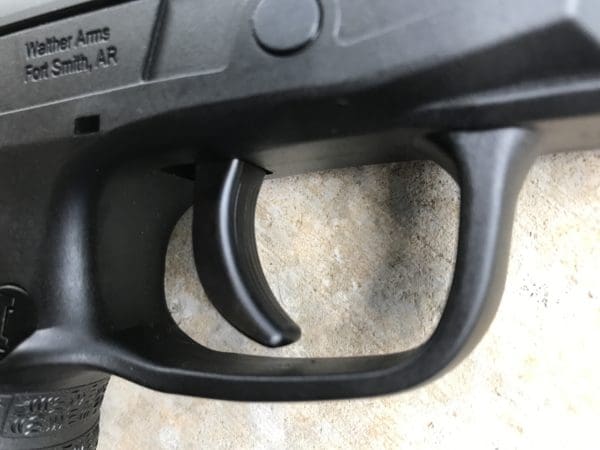There are a variety of individual aspects that to shooting a gun which, when practiced and mastered, result in improved handgun accuracy. One of the most misunderstood and sometimes misused is trigger reset.
The Basics
Trigger reset is the part of the trigger return process after firing during which the sear is re-engaged as the trigger is released, allowing for the gun to fire the next round. This allows for a subsequent shot or follow-up shot.
Here’s what that looks like inside the gun:
The biggest mistake I see in my classes is when students are in a hurry to come off the trigger. If the student’s finger tends to come flying off the trigger after a shot, they were more than likely slapping the trigger to begin with. That negatively affects accuracy.
The moment your trigger finger breaks physical contact with the trigger shoe, you will either 1) take a running start again and slap the trigger shoe for the next shot or 2) have to take extra time, no matter how minuscule, to place your finger correctly back on the trigger, apply enough pressure to eliminate the take-up, then apply a little bit more to break the next shot. All of that while disturbing your sight alignment as minimally as possible.
Many shooters think the faster they reset, the faster they can fire the next shot. There is some truth to that, but you can only shoot as fast as your sight alignment dictates, assuming you are a proponent of sighted fire.
It does no good to be in a hurry to reset your trigger if your technique slows you down while you get your sights back on target. I promise that it takes more time to confirm a good sight picture than it does to reset the trigger.
The Right Sequence
I encourage my students to perform the technique in the correct sequence. You should start by first getting the gun back on target, confirm your sight picture, and then reset the trigger. That’s not the sequence many students naturally follow and it takes some training to think through it and practice to become routine.
A consequence of an improper sequence is the urgency to start applying pressure to the trigger. Once the trigger is reset, many students will start applying pressure before the gun is back on target or they have confirmed their sights. They will typically fire the next shot without one (if not both) of these being sorted out first.
Another problem we see is when folks fail to take up the slack in their trigger after the reset. They fail to move the trigger up against the sear wall. Once the trigger is against the sear wall, breaking the shot requires only slight pressure.
I subscribe to the process of elimination type corrective strategy. We identify and eliminate individual deficiencies in your technique. That tends to improve other areas of your technique at the same time for a bigger overall improvement.
It takes work to improve
Keep in mind you have to really engage the brain in this process. Many students are “tired” at the end of our training because they’ve had to think about the process throughout it, frequently for the first time. Thinking and mental engagement are exhausting. Our students tend to sleep well at night.
First off, acknowledge that it takes hard work to improve and achieve proficiency. There is no secret pill that will elevate you to rock star status. You have to put in the hours of blood, sweat and tears to earn the title marksman.
Too many folks look for the easy road. They settle for mediocre, focusing on all the “fun” things. That’s because the fun things are fun. Try to get past what’s fun and get to mastering of the fundamentals. Once you do that, you can truly improve your shooting.
Mental toughness
As I watch students perform I usually go for the low-hanging fruit first, one of the biggest of which is trigger reset. If I can get them to consistently and correctly apply solid trigger reset skills many of the other problems they may be having with accuracy have a good chance of solving themselves.
I can teach a monkey to pull a trigger, but it takes a more superior being to master the art of pulling the trigger more than once and doing it with accuracy. With a little thought about the process and some practice, you can be a superior being, too.
Jeff Gonzales is a former US. Navy SEAL and preeminent weapons and tactics instructor. He brings his Naval Special Warfare mindset, operational success and lessons learned unapologetically to the world at large. Currently he is the Director of Training at The Range at Austin. Learn more about his passion and what he does at therangeuastin.com.
